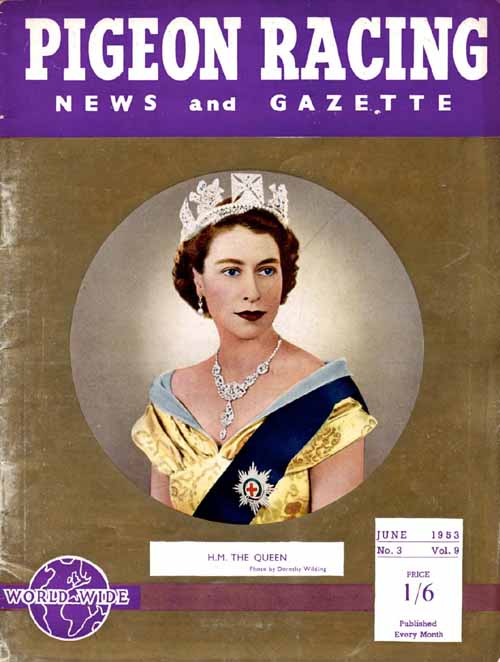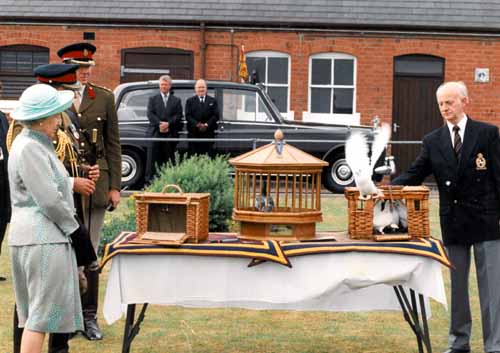
- From 1899 racing pigeon ‘Grand National’ to HM The Queen major race wins ‘coo’
King George V interest in racing pigeons, inherited from his father Edward VII, has been passed to his son, George VI, and his granddaughter and HM Queen Elizabeth II.
Royal sporting life goes beyond ‘The Sport of Kings’ – horseracing – with the royal family’s interest in pigeon fancying remaining as strong as ever in 2020.
King George V spent much of his adult life on the Sandringham Estate, where he built his pigeon loft, described by a newspaper at the time as ‘a pretty, twostoreyed building, capitally fitted up’.
Sandringham and the royal pigeons are reared and housed there today, with The Queen’s interest in the royal pigeon lofts, that contain over 200 birds, mature and younger pigeons, with some of the Queen’s pigeons ‘stock’ birds, used for breeding, loyally maintained.
The majority are used for racing, a tradition that stretches back over a century, during the pigeon-racing season, between April to September.
Royal birds are entered into club races each week, alongside prestigious national races – distinguished by their distinctive leg-ring marked with the Queen’s cipher, ER, and the royal crests on their travelling boxes.
George V, from 1893 onwards, saw his pigeons raced – under the name of schoolmaster from West Newton, Yorkshireman Joseph Walter Jones – known as Walter.
The King’s second son, Prince Albert, the future George VI, assisted at the royal pigeon lofts. Under his supervision, both monarchs bred and raced a clutch of first-class birds.
The first royal pigeons came from Belgium, a present to the royal family in 1886, from the King of the Belgians, Leopold II. The future Edward VII son George built a loft, with a second gift of birds from Belgium following.

Edward raced competitively, a tribute to the quality of bird dispatched by Leopold and in 1899, an outstanding bird, prosaically called 189, won the coveted first prize in the National Flying Club’s Grand National.
Newspaper editions reported: ‘The good bird flew from Lerwick to Sandringham, a distance of 510 miles, 1,705 yards, at an average rate of 1,307 yards per minute.
‘Many a pulse beat strongly with loyal gladness when it was flashed along the wires that 189 had come in first, and nobody was more pleased than King Edward VII himself’.
HM Queen Elizabeth II has donated a number of royal birds to charitable auctions; helped research into pigeon fancier’s lung – a condition similar to asbestosis – and helped in raising funds towards a monument to animals killed in war.
The Queen, patron of the Royal Pigeon Racing Association and the National Flying Club, has been successful in winning all major races in Britain.





